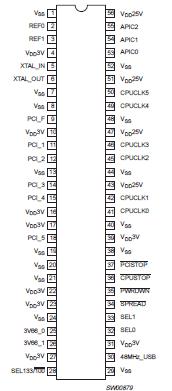PCK2014A: Features: • ESD classification testing is done to JEDEC Standard JESD22. rotection exceeds 2000 V to HBM per method A114.• Latch-up testing is done to JEDEC Standard JESD78 hich exceeds ...
floor Price/Ceiling Price
- Part Number:
- PCK2014A
- Supply Ability:
- 5000
Price Break
- Qty
- 1~5000
- Unit Price
- Negotiable
- Processing time
- 15 Days
SeekIC Buyer Protection PLUS - newly updated for 2013!
- Escrow Protection.
- Guaranteed refunds.
- Secure payments.
- Learn more >>
Month Sales
268 Transactions
Payment Methods
All payment methods are secure and covered by SeekIC Buyer Protection PLUS.

 PCK2014A Data Sheet
PCK2014A Data Sheet







